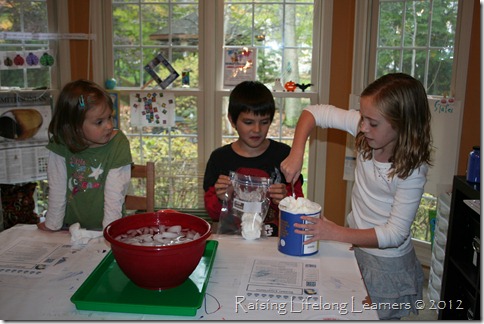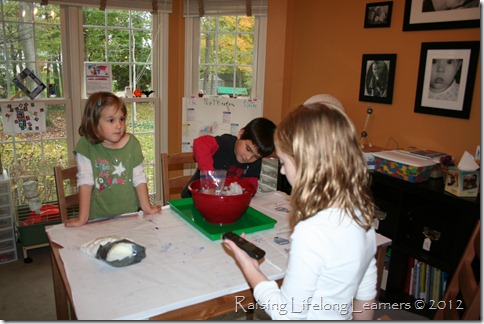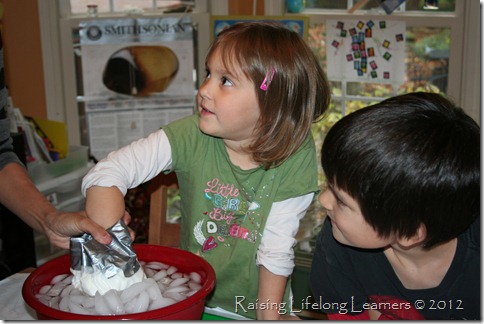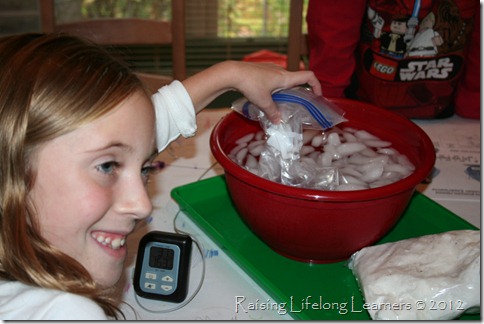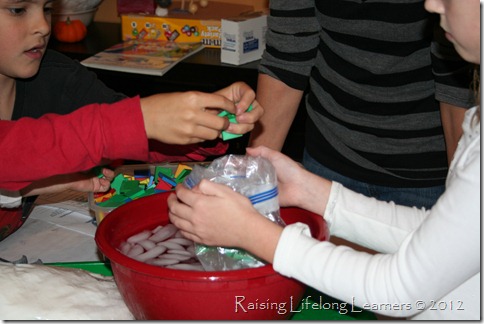Hands-On Learning: Blubber
I firmly believe that kids learn best when they are actively involved in their topic. This is one of the biggest reasons I’ve always loved to read, write, and teach about science. A few years ago, the kids and I explored Antarctica through books, websites, videos… and science.
Since I recently taught about arctic and antarctic animals in the preschool science class I co-teach with Trevor at our co-op, we pulled our materials back out and tried some of the experiments and activities again.
A study of Antarctica is a wonderful platform for talking about animals and the special adaptations they have that make it possible for then to survive in such a harsh climate.
As we were all fascinated by the lives and habits of the amazing emperor penguin, we used it as our focus.
First, we read about emperor penguins in the Zoo Guide by Answers in Genesis. This book provides beautiful photographs and a wonderful Biblical overview of an animal’s design and its adaptations.
Then we learned about blubber. The best way to understand how blubber works to keep an animal warm is to “feel” it for yourself.
You’ll need:
- A large bowl of ice and water
- Four quart-size plastic zipper bags
- Shortening
- Thermometer
- Stopwatch/Timer
- Small weights
First, fill one zipper bag full of shortening. Then, place another zipper bag inside out into the shortening and zip the two bags together. (Or tape them with duct tape as we ended up doing!)
Zipper the two remaining bags together inside out to form a “control” glove. Put the control glove on your hand, submerge it in the ice water, and time how long you can tolerate the cold. Record the time.
Now, do the same thing with the “blubber” glove. Record your time.
Compare the temperature of the water through the gloves, too. Submerge each glove again, this time with a thermometer inside and record the temperatures.
Finally, test the buoyancy of blubber.
Blubber offers animals a way to conserve energy in the water as they hunt for prey, aside from keeping them warm. It helps them stay afloat, too, by making them more buoyant.
Float your control glove on the water and pile weights on it until it sinks.
Record the amount of weight it was able to hold. Now, repeat this with the blubber glove. Did you see the difference?
All in all, this was a fun way to learn about blubber, what animals use it for, and how it helps them survive in the crazy climate found in Antarctica.
How do you include hands-on learning in your lessons?


